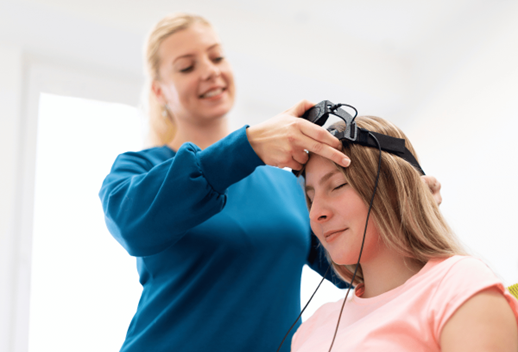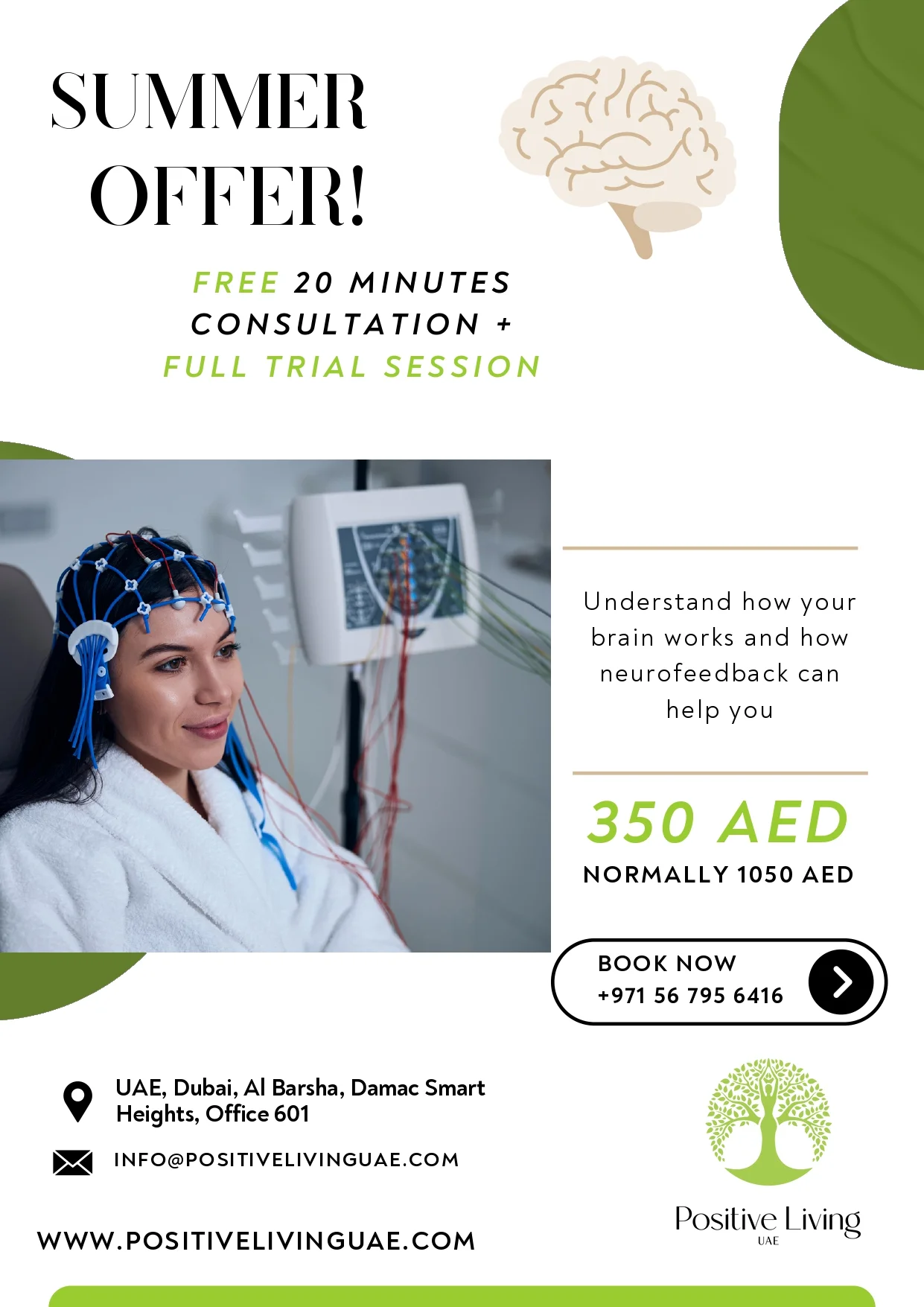Neurofeedback Therapy: Training Your Brain for Better Mental Health
Neurofeedback therapy represents one of the more exciting aspects of neuroscience and therapeutic practice in contemporary mental healthcare. Non-invasively, it allows an individual to see their brain activity in real-time and learn to modulate this brain activity, thus producing encouraging results in a range of psychological and neurological conditions.

What Is Neurofeedback Therapy?
Neurofeedback therapy, also known as EEG biofeedback, is a specific type of biofeedback that deals with changes in brain wave activity. At a neurofeedback session, electrodes measure electrical activity produced by brain cells placed on the scalp, and this activity is displayed on a computer screen either as a video game, animation, or sound manipulation in response to changes in brain wave patterns.
The base concept is simple yet powerful: we can learn to change our brain activity by observing or hearing representations of it. Through these repeated sessions, individuals may train their brains to produce an increase in certain types of brain waves and a decrease in others for the improvement of their attention, affective regulation, and cognition.
The Science Behind Neurofeedback
Our brain generates different types of electrical activity, which can be measured in waves having different frequencies:
- Delta waves (0.5-4 Hz): Related to deep sleep
- Theta waves (4-8 Hz): Related to drowsy states and meditation
- Alpha waves (8-12 Hz): Present in states of rest while eyes are closed
- Beta waves (12-30 Hz): Dominant during states of normal waking consciousness
- Gamma waves (30-100 Hz): Associated with higher cognitive processing
Neurofeedback therapy is based on principles of operant conditioning where the brain produces the desired wave patterns and the client receives positive feedback, like points in a game or the continued viewing of an interesting movie.
When undesired patterns appear, this feedback is suppressed or altered. The goal is for the brain to learn. In the process, it may promote the generation of new neural pathways and strengthen beneficial connections, leading to longer-lasting improvements in brain function. According to a meta-analysis published in Applied Psychophysiology and Biofeedback in 2020, neurofeedback therapies yield moderate to large effect sizes based on various conditions.
Applications of Neurofeedback Therapy
Neurofeedback has shown promise in treating numerous conditions –
- ADHD
One of the most studied applications is that of attention deficit hyperactivity disorder. In a 2024 study, it was found that neurofeedback exhibited effects similar to medications for some children with ADHD in the areas of attention, impulse control, and hyperactivity.
- Anxiety and Depression
Research published in 2021 suggests that neurofeedback can help reduce anxiety and depression by training individuals to regulate brain waves and activate calm alertness consciously. Patients frequently report having more stable moods and less anxiety at the end of neurofeedback treatment.
- Insomnia and Sleep Disorders
Neurofeedback helps individuals with chronic sleep problems by targeting brain waves linked with relaxation and the onset of sleep. A 2024 study showed that neurofeedback therapy led to improvements in sleep quality and reduced the time needed for the participants to fall asleep.
- Post-Traumatic Stress Disorder
Neurofeedback offers a non-pharmacological approach to symptom management in people with PTSD. Research published in Psychological Trauma: Theory, Research, Practice, and Policy indicates that it may help reduce hyperarousal and improve emotional regulation.
- Peak Performance
Neurofeedback is finding increased use in sports and business by people trying to get the most out of their cognitive faculties. It was even put to use in astronaut training programs by NASA to enhance focus and performance while under stress.

The Neurofeedback Process
Following are the main steps constituting a typical neurofeedback therapy program:
- Assessment: Before starting with the training program, practitioners do assessments using quantitative EEG (QEEG) to map brain activity and identify areas of dysregulation.
- Protocol Selection: Specific protocols are selected based on the assessment to target the individual needs.
- Training Sessions: Regular sessions that last 30 minutes.
- Progress Monitoring: The practitioners monitor changes in brain activity and improvement in symptoms over time.
Most individuals require 10-20 sessions to produce lasting results, though some notice an improvement in their condition after just a few sessions. The scheduling of the sessions (usually one or two a week) is done according to individual needs and responses.
Benefits and Limitations
Benefits
- Non-invasive with minimal side effects
- Offers a drug-free complementary approach to other treatments
- The brain learns a new pattern that may result in lasting change
- Actively engages individuals in their treatment
- It can be customized for different ages and conditions
Limitation
- Attending many sessions requires commitment.
- Outcomes are highly individualized.
- May not always be reimbursed by an insurance scheme.
- Requires trained professionals for proper implementation.
Future Developments in Neurofeedback
Technological advancement has now made neurofeedback systems more available. Home systems are not as sophisticated but increasingly provide an opportunity for public access to this therapy. Also, scientists are adding virtual reality to neurofeedback to create a truly immersive training environment.
Research is expanding our understanding of how neurofeedback changes brain function. At the forefront of this are functional MRI neurofeedback, providing feedback based on blood flow in selected regions of the brain, thus opening up a world for more sophisticated targeted interventions.

The Process of Neurofeedback Therapy
When considering neurofeedback, one should probably:
- Discuss with their healthcare providers whether this is appropriate for their case.
- Thoroughly research practitioners, including credentials and experience.
- Ask questions about assessment methods, protocols, and expected outcomes.
- Inquire about costs, fees, and time involved.
- Keep expectations about results within realistic limits.
Positive Living UAE is one organization that provides extensive programs conducted by qualified neurofeedback practitioners who walk patients through the process. Our integrated model combines the neurofeedback approach with other evidence-backed therapies to tackle one or many mental health conditions for an all-around provision of mental wellness support.
Neurofeedback is an exciting new frontier in brain-based therapies, bringing hope to individuals who found no solace through conventional means. For those wanting to explore this new treatment modality further, resources such as Understanding Neurofeedback provide helpful information concerning the methods, applications, and current research trends.




